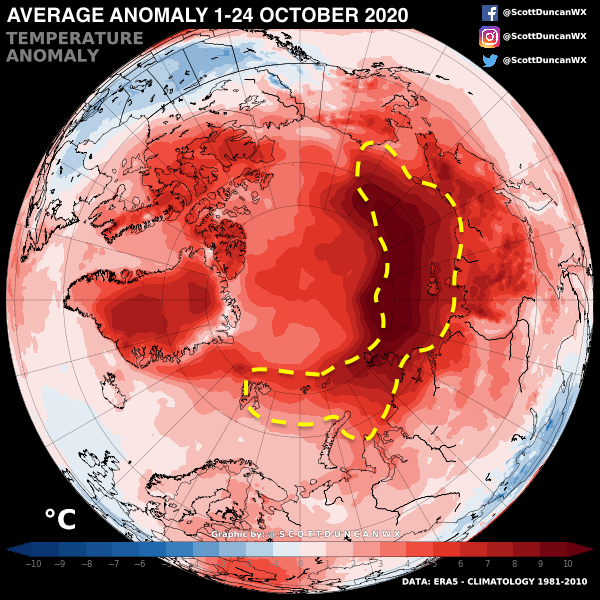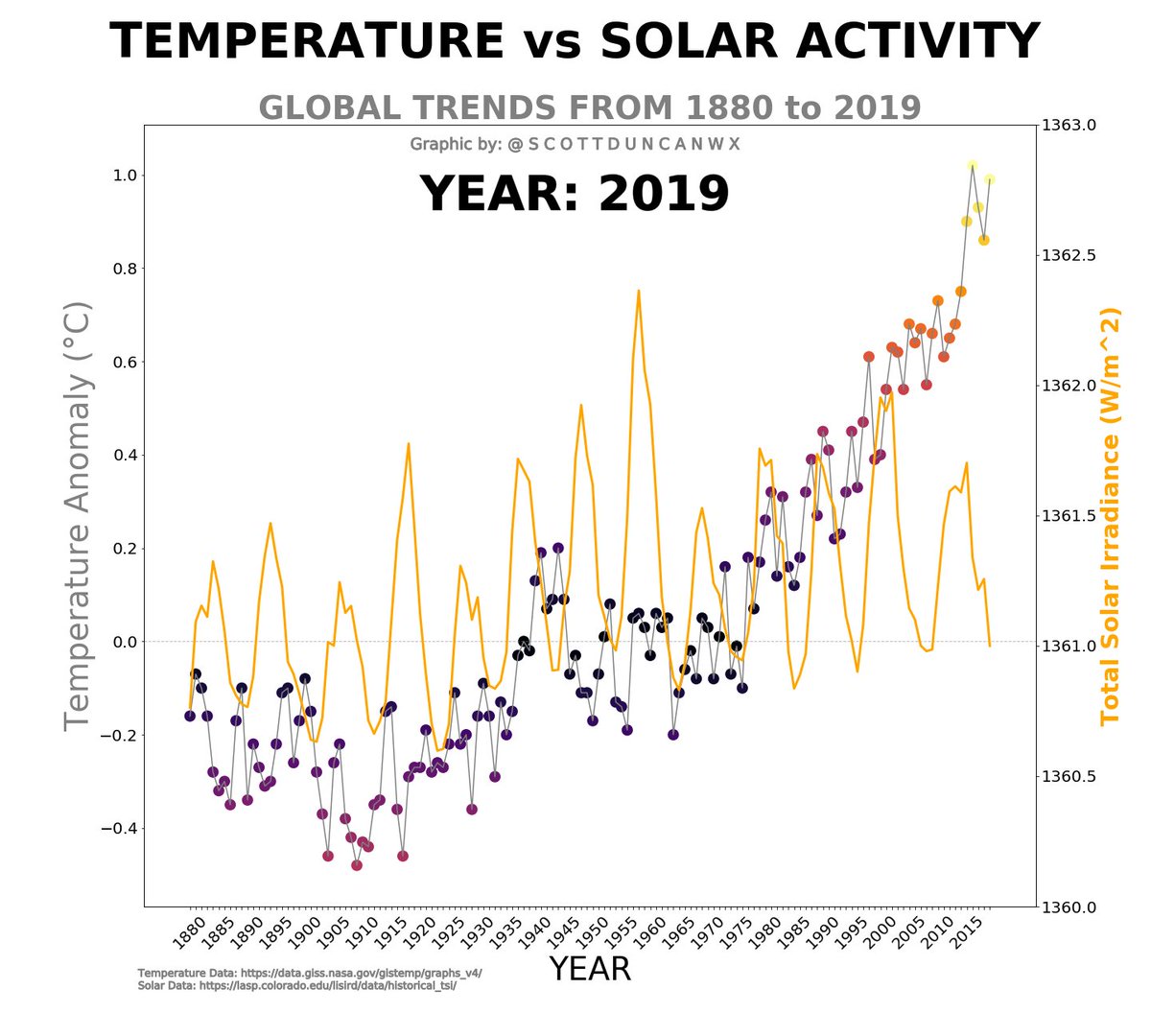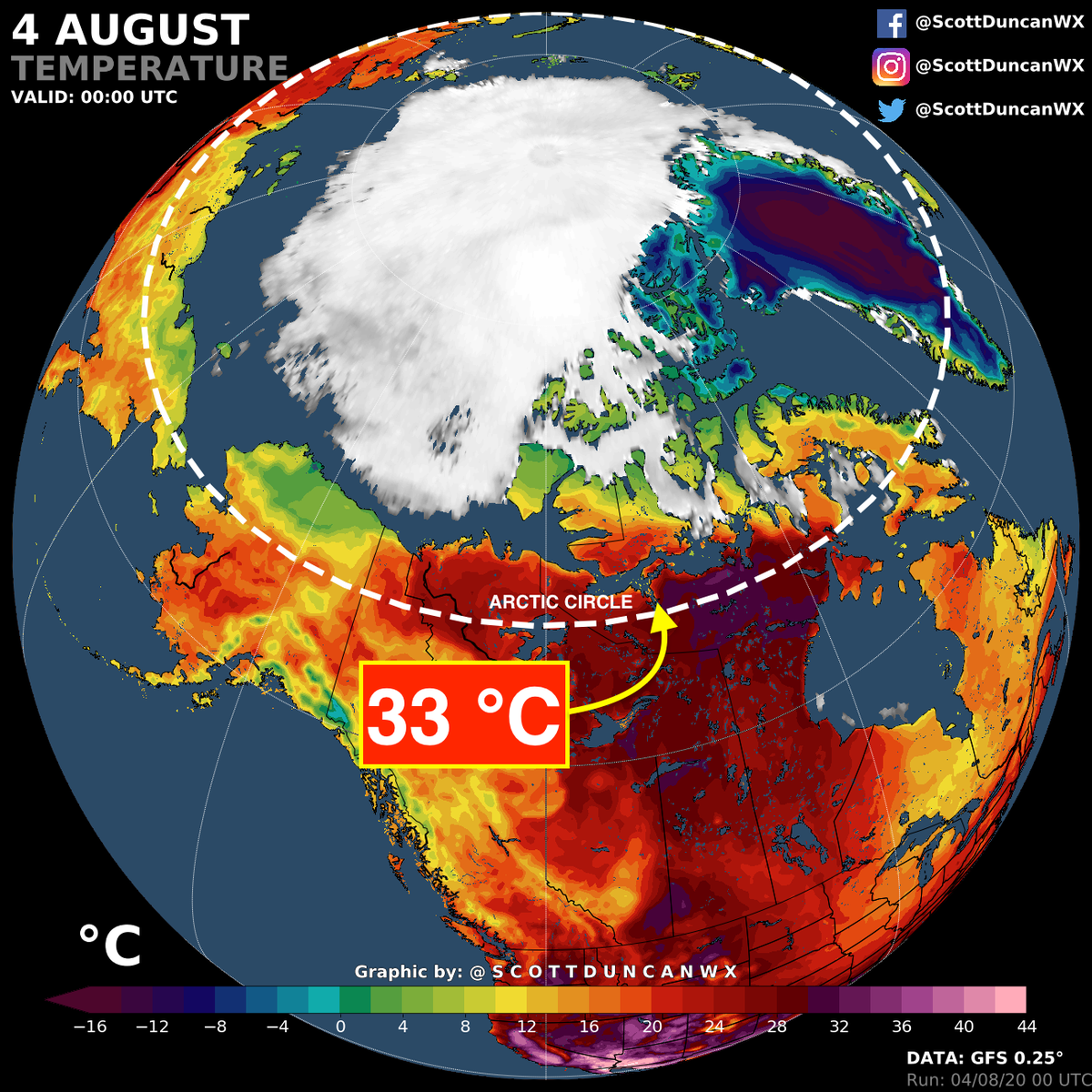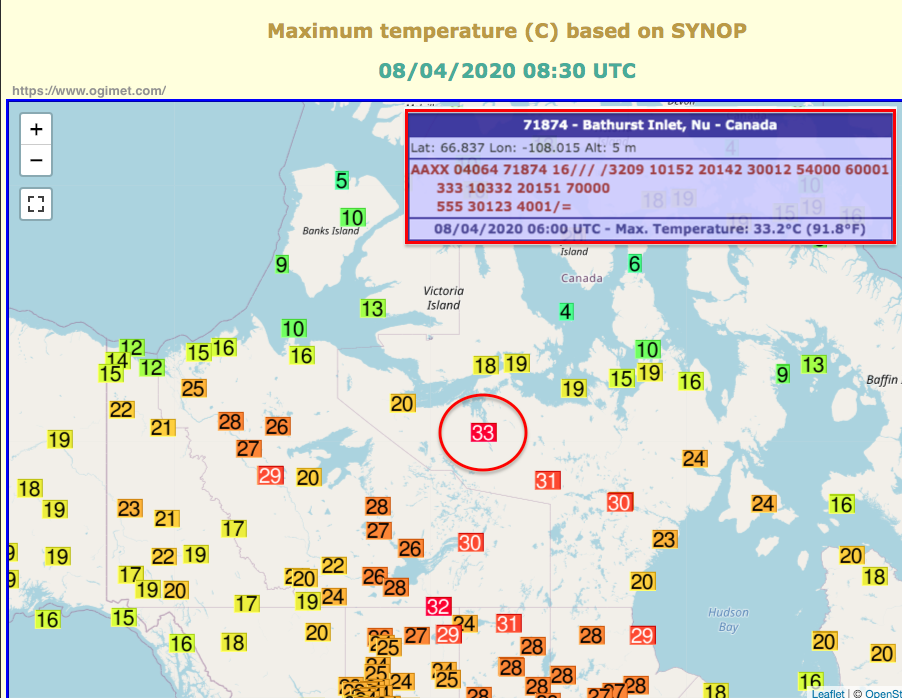
Extreme and relentless heat in the Arctic has resulted in a shocking lack of Arctic Sea Ice this year.
The refreeze season is millions of square kilometres behind where it should be (orange line). We are in uncharted territory right now.
This is daily coverage since April.
The refreeze season is millions of square kilometres behind where it should be (orange line). We are in uncharted territory right now.
This is daily coverage since April.
More and more water becomes exposed each decade as the climate warms.
This is how the minimum ice extent varies from 1980 to 2020.
The orange line is a 30 year average from 1980-2010 for this date.
This is how the minimum ice extent varies from 1980 to 2020.
The orange line is a 30 year average from 1980-2010 for this date.
If we average each dace since the 1980s, the trend is clear.
Sometimes the message is hit home harder when we compare what the average minimum looks like compared to what we observed in 2020.
We are looking at around 2.6 MILLION square kilometres of extra open water.

We are looking at around 2.6 MILLION square kilometres of extra open water.
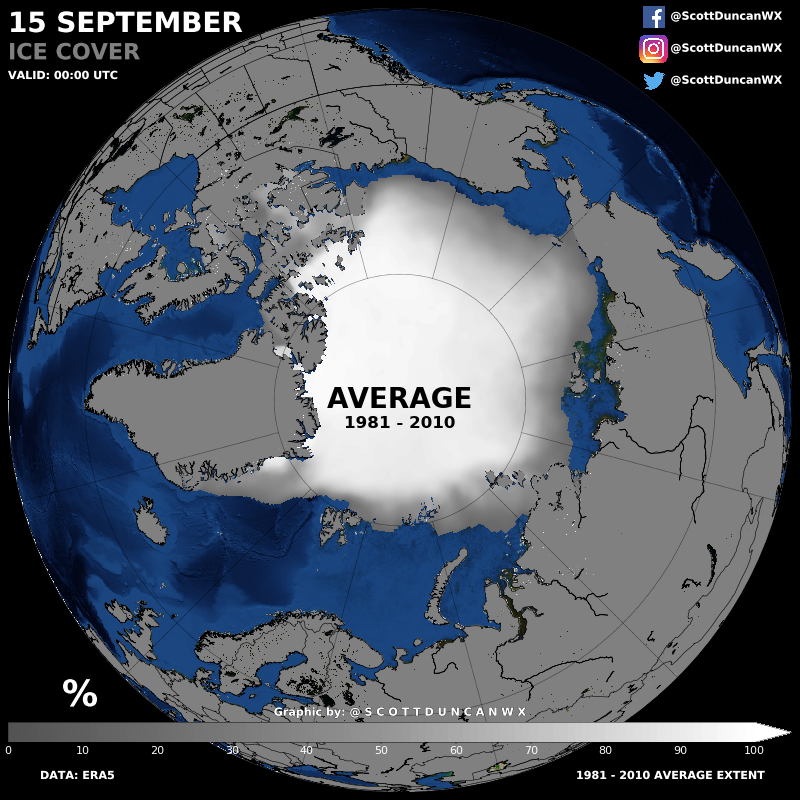
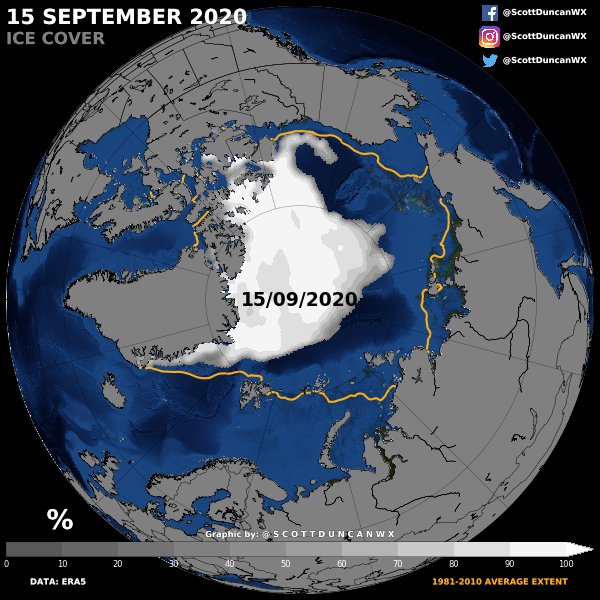
Arctic shipping is becoming more accessible as the sea ice melts more and more each summer...
Some companies will actually profit from this opportunity.
Some companies will actually profit from this opportunity.
• • •
Missing some Tweet in this thread? You can try to
force a refresh

